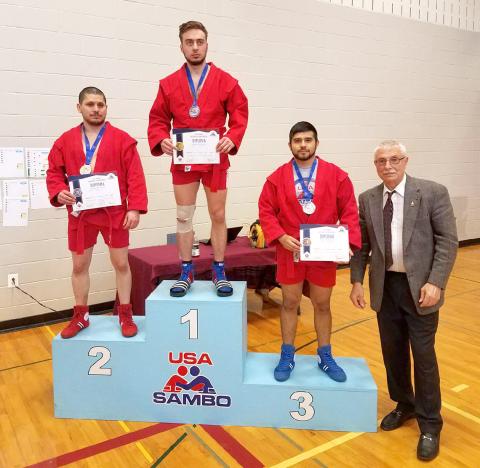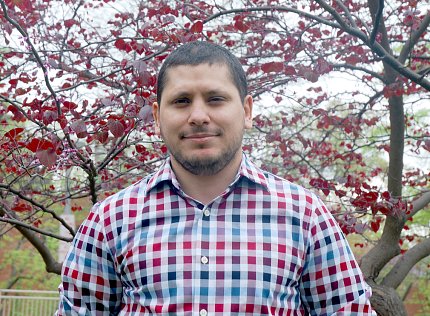Bardakci Readies for Martial Arts Championship

If all goes according to plan, Hakan Bardakci will be in Russia this November, competing for a martial arts championship.
In early April, the 33-year-old, a project officer with the Office of Research Facilities, competed in his first-ever national sambo championship outside of Philadelphia. Sambo is a form of martial arts that combines techniques of several other styles including jujitsu and judo. Invented by the Russian army in the early 1920s, sambo is an acronym for samozashchita bez oruzhiya, which means “self-defense without weapons.”
Bardakci made it to the final round of the tournament. To get there, he beat a two-time world champion. He also gained the attention of the coach who selects the national team. Competing in the tournament is just one step toward representing the United States in the sambo world championships in Sochi, Russia.
Currently, Bardakci works in the Division of Design and Construction Management. He helps with the design of new laboratories and other buildings and oversees their construction. Recently, he led the design and early construction phase of the Northwest Child Care Center. He’s also coordinating the design and construction of several projects in Bldg. 13, including the installation of a transmission electron microscope. The 9-year NIH veteran works on an alternative work schedule so he can complete all his job responsibilities and train for competitions.
The national championships were the first time Bardakci competed in a sambo tournament. He was born in the U.S. and grew up in Turkey. Since he was a toddler, he’s been practicing several styles of martial arts, including judo, Greco-Roman wrestling and Brazilian jujitsu. In high school, he was the 4th best judo wrestler in Turkey. He was multi-time Maryland and Virginia state gold medalist in judo.
Bardakci first came to NIH while a student at Catholic University. Back then, he contacted the NIH Judo Club and asked if he could train. Soon after, he began working with the club, including former NIH deputy director Dr. Thomas Malone. There, Bardakci had the opportunity to train with athletes from such places as Eastern Europe, France and Japan. That experience exposed him to different techniques and strategies. Once he graduated from CU, he took a position at NIH.

Photo: Eric Bock
When not working, he’s either training, practicing or recovering. He usually begins his weekend workout on Thursday night. After work, Bardakci stretches, uses an electric muscle stimulation recovery device, practices yoga and does cardiovascular exercises.
The next day, he runs the hills of Sugarloaf Mountain. Afterward, he’ll read the latest literature on exercise science and review film of future opponents. At 2 p.m. on Fridays, Bardakci trains for 3 or 4 hours. For example, he’ll practice his technique on a doll and then lift conventional weights, rocks or logs. He sometimes employs unorthodox methods that he learned while growing up in Eastern Europe.
On Saturday, he practices at a local judo or wrestling gym. On Sunday, he invites other wrestlers—“whoever’s not injured,” he said—to his garage, where he set up wrestling mats, or a local gym.
As of now, sambo is not yet approved for the Olympics. If it’s ever okayed, Bardakci hopes to compete for a spot on the U.S. team. “That would be super exciting,” he said.
Training takes sacrifice, especially since many of his peers do not work full-time, he explained. If he’s not exercising, he’s probably sleeping, making a veggie smoothie or watching a movie. He also posts on his blog, sharing insights on health and exercise.
Bardakci believes he’s becoming a “more technical martial artist as I get older.” He’s figured out how to train without injuring himself and his long tenure in the sport helps during matches. As for how long he’ll continue, he promised, “If I’m healthy, I’ll be competing.”
